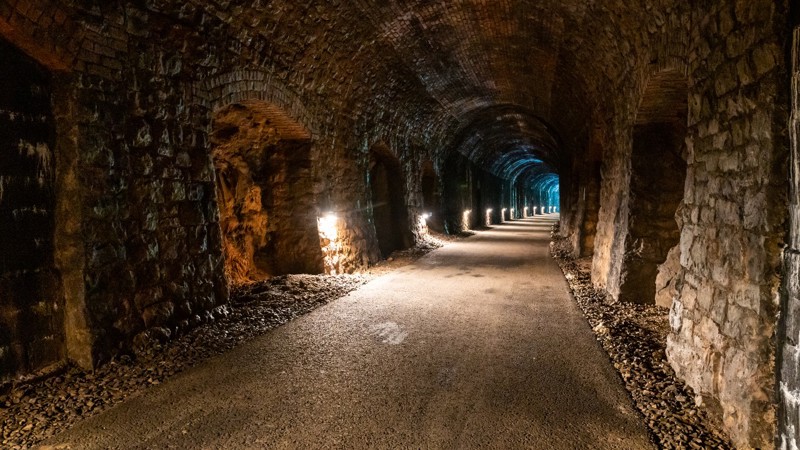About the HRE
The Historical Railways Estate (HRE) is made up of over 3,100 former railway structures and land linked to closed lines.

Once managed by BRB (Residuary) Limited, which was dissolved in 2013, the HRE moved to National Highways at the request of Department for Transport. We’ve been maintaining safety on and around the structures for over a decade.
History of the HRE
Railways have been in Britain’s landscape for over 400 years. They were made possible by the invention of the steam engine, prompting a railway revolution and changing the face of the world. While ‘railway mania’ quickly took hold in Britain, substantial damage to the railways from both wars and the advances in road transport resulted in a full review of the railways nationwide in 1963.
It’s 60 years since the first Beeching Report titled ‘Reshaping of British Railways’ was published, where Richard Beeching proposed the closure of around 6,000 route miles of Britain’s rail network, including a third of its stations.
(Greenway Bridge, Devon in July 1950)
(Greenway Bridge, Devon in June 2023)
Many miles of lost railways have disappeared into the landscape, structures and land were sold off privately and old station buildings found a new purpose as private homes. Former lines were lifted and nature took hold, with the only remaining signs of railway routes being the trees that once lined them.
Our animation tells the story of the railway network and its structures from Victorian times to the present day.
What are the structures?
The Estate is made up of a wide variety of structures and other assets which fit into six broad categories:
Bridges
Overbridges were built to take traffic over the railway, while underbridges carry the railway over something, perhaps a path, road, river or another railway.
Tunnels
A distinctive feature of the UK rail network, tunnels were often needed to take the railway line through hillsides.
Viaducts and aqueducts
These impressive feats of engineering are designed to take railways and watercourses across open areas such as valleys.
Partial structures
Some structures have previously been partly dismantled, often for safety reasons. For example, the ‘decks’ of bridges over roads may have been removed to prevent high vehicles striking them, leaving the upright supports or abutments.
Earthworks
These structures were used to adapt the natural landscape to accommodate the railway line. Examples include embankments, retaining walls, weirs, flumes and pipes.
Land and other structures
We also manage a number of pockets of land, former roadways, memorials and other structures which were once part of the railway estate.
